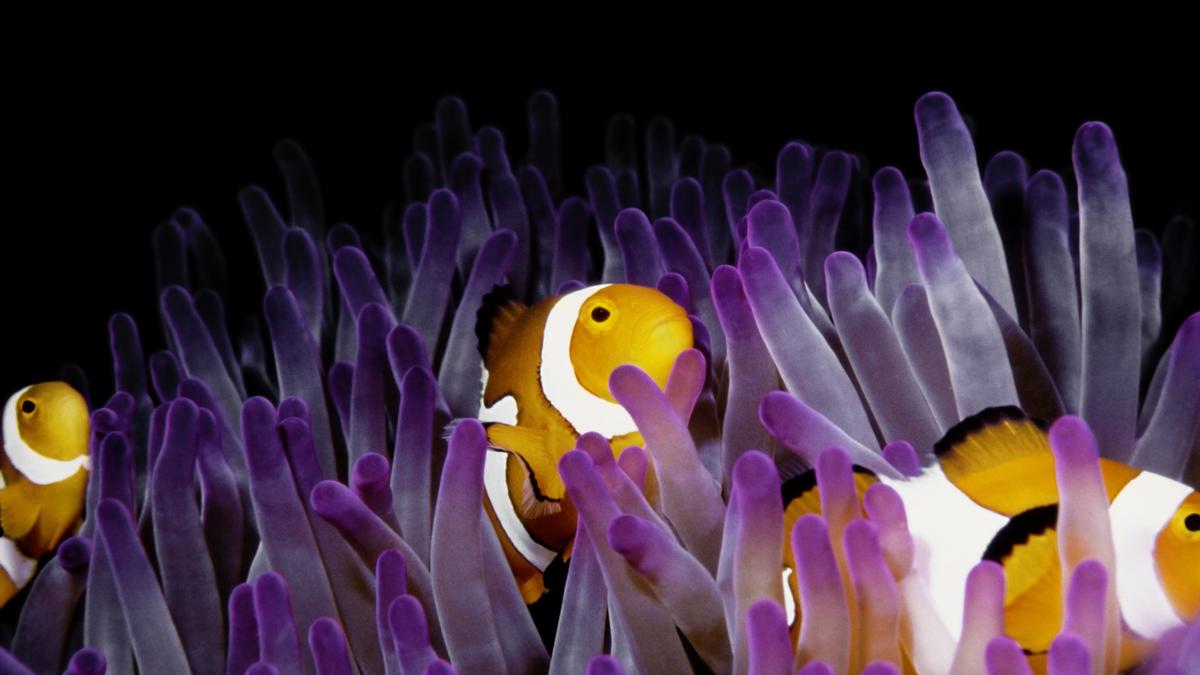The clownfish were popularised by the Disney film ‘Finding Nemo’.
| Photo Credit: Getty Images
In 2023-2024, the world suffered a devastating coral bleaching event during which 84% of the world’s reefs spanning 83 countries and territories were affected. Scientists have since linked the event to ocean warming and marine heatwaves — extended periods of high sea surface temperature than usual.
These phenomena are of great research interest because they have several consequences for marine ecosystems and the human livelihoods and industries that depend on them.
For example, a study in Science Advances on May 21 has now revealed that adult clownfish can shrink, regrow, and even synchronise these changes with their partners, using body size as a flexible tool to survive the stress of hot water.
During the 2023-2024 event, researchers from the UK and the US tracked 67 breeding pairs of wild clownfish (Amphiprion percula) in Kimbe Bay in Papua New Guinea for about 180 days. They caught each fish by net and measured its total length at the start of the study and at the end of every lunar month. They also tied sensors by cable next to each anemone and recorded the water temperature every two minutes, used to estimate the heat stress the fish experienced.
To describe body-size change, team members calculated the monthly percentage change in length. Then they then built Bayesian statistical models to test how shrinking and growth related to heat stress in the current and previous month, each fish’s initial size, the size ratio between partners (a proxy of social conflict), and survival through the heatwave.
At the time of the heatwave, the team found 71% of females and 79% of males shrank at least once; 41% of those fish shrank over multiple months. The shrinkage thresholds differed by status: females tended to shrink only once they exceeded about 80 mm and the males above 61 mm. Fish that shrank repeatedly also showed the greatest bounce-back growth when conditions improved.
The team also found that higher heat in the current month encouraged growth, perhaps via faster metabolism, while heat last month promoted shrinkage, suggesting a delayed stress response.
Shrinking also became less likely when the males and females were already close in size, but more likely when their size gap was large, indicating that fish also adjust length partly to avoid aggression or eviction.
In all, the team reported that only 11 fish died: the fish that never shrank had the highest mortality. A single shrinking episode cut death risk by 78% and all individuals that shrank multiple times survived the entire heatwave. Survival was even higher when both partners shrank together, suggesting coordinated size adjustment reduced conflict and metabolic load.
Researchers usually assume vertebrates including fish grow or stay the same size once they become adults, yet the clownfish routinely shrank to ride out extreme heat. According to the study, this let them balance the extra metabolic cost of living in warm water while maintaining social order inside the anemone.
If the ability to bounce back is widespread, the shrinking could help reef-fish populations survive more frequent marine heatwaves but it may also lower future reproduction because smaller adults lay fewer eggs.
Published – May 22, 2025 05:45 am IST
